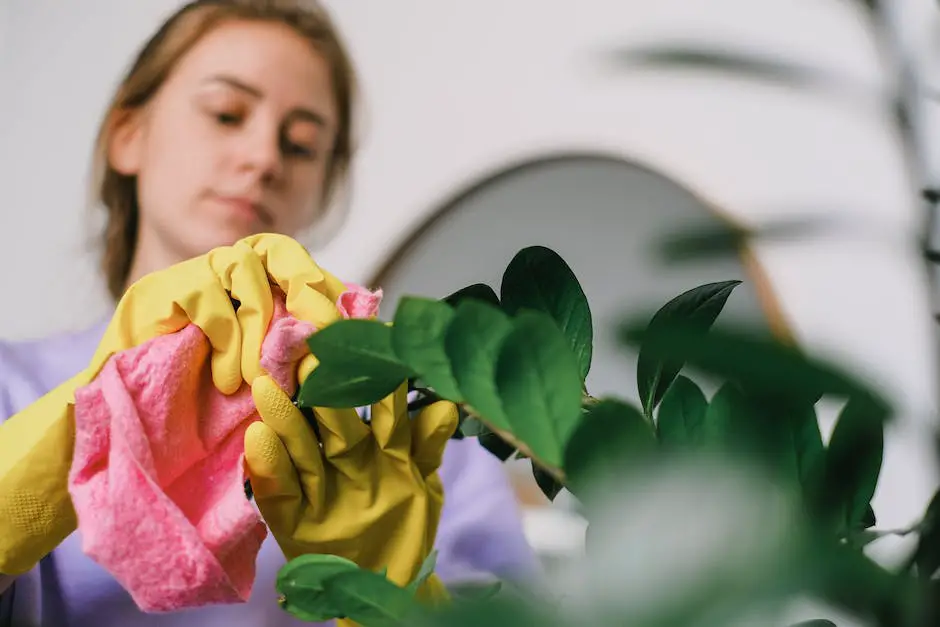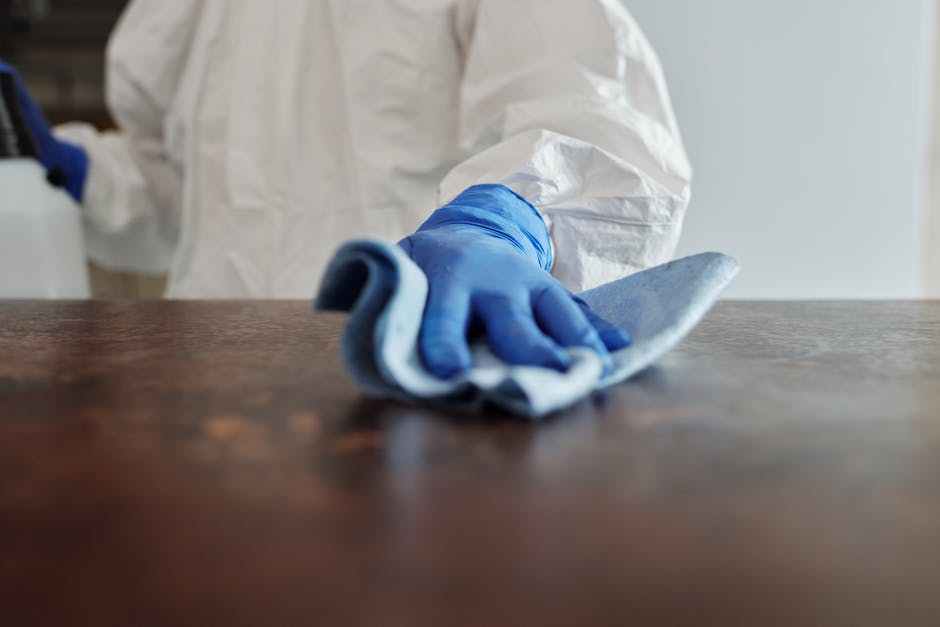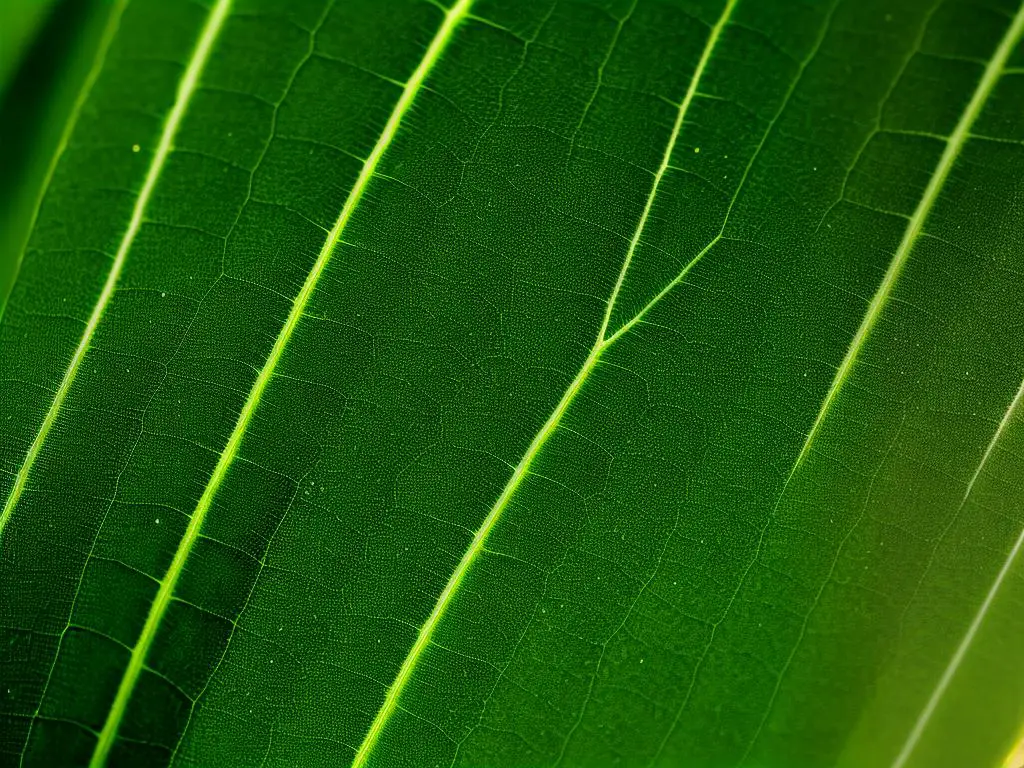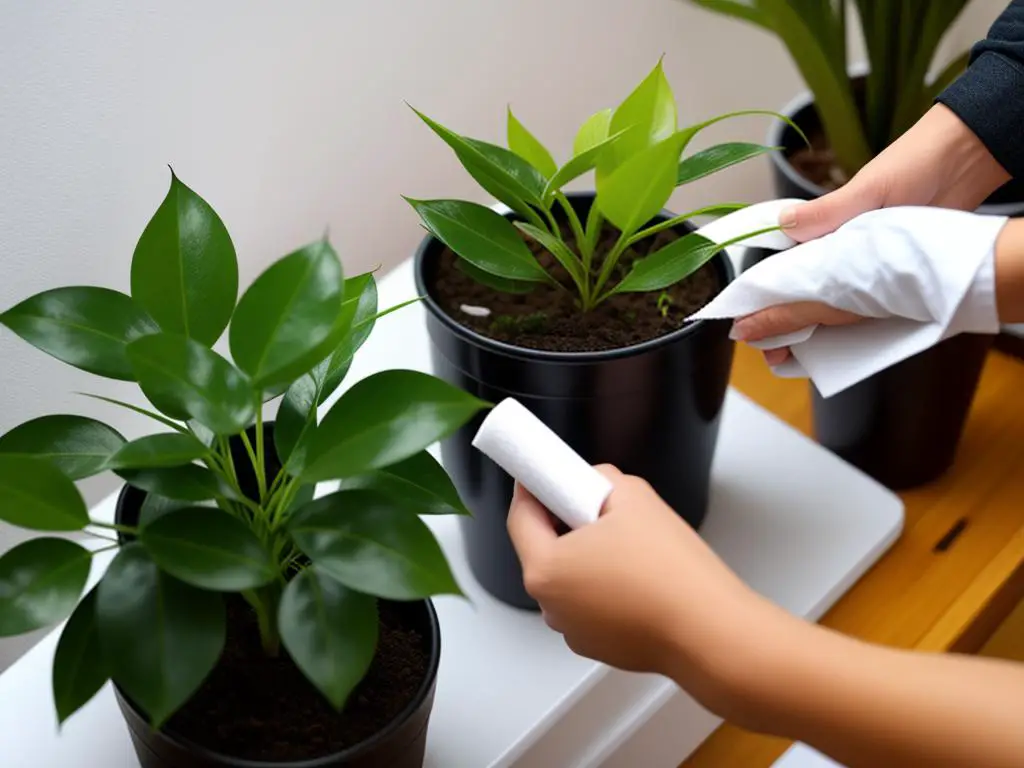Houseplants bring a great deal of charm and life to any living space, serving not only as sublime decor elements, but also as purifiers of the indoor atmosphere. As humans, we necessitate clean air for our well-being and health, and plants are no different. Spotless leaves are vital for the prosperity of your beloved indoor greenery. Our homes, however, are bustling with dust and potential pests, that may pose a threat to these silent life enhancers. Therefore, acquiring intermediate knowledge about keeping your houseplant leaves immaculate, becomes pivotal. This insight draws attention to the importance of maintaining cleanliness, offers a comparative analysis of various cleaning methods, provides a thorough guide on conducting the cleaning process, and prepares you with preventive tactics against dust and pests.
Understanding the Importance of Clean Leaves
The Importance of Clean Leaves
As a young adult embarking on the rewarding journey of caring for houseplants, one might overlook the importance of keeping those leaves spick and span. The vitality of your plants depends on this crucial task.
Green-fingered enthusiasts often focus their attention on watering frequency or the optimum light conditions, forgetting that the health of a plant is not just about the roots and stem, nor which corner of your living room it inhabits. It’s also about the condition of its leaves.
You see, just like humans, plants breathe and eat. But instead of mouths and noses, plants employ their leaves in a process known as photosynthesis. During this process, they inhale carbon dioxide, take in sunlight and tap water, and exhale oxygen. It’s a rather extraordinary system! As a result, plants play a significant role in providing us with clean air while concurrently providing a touch of nature to our indoor spaces.
The Consequence of Dusty Leaves
Inhabiting indoor environments means that houseplants are not just exposed to sunlight and carbon dioxide, they’re also exposed to dust particles which can settle on their leaves over time. These dust particles, including dirt coming through open windows or kicked up from foot traffic, can hamper photosynthesis. In simple terms, if a leaf is covered in dust, it can’t efficiently consume sunlight, which in turn reduces the plant’s ability to make food for its survival.
Another point to bear in mind is that dust can also block the stomata (small pores) on a leaf’s surface, inhibiting the plant’s ‘breathing’ process. When this happens over time, you’ll notice your plants seem sluggish or start to wilt, even when watered regularly.
Incorporating Leaf Cleaning into Your Routine
So how frequently should you be cleaning your plant’s leaves? Well, it’s not a daily task, rest assured. A gentle wipe-down with a damp cloth every few weeks should suffice. For plants with smaller leaves, a soft brush or a gentle shower should do the job.
Some people swear by the touch of a drop of mild soap mixed into the water, or even using mayonnaise to make the leaves shine. While such measures are optional, they should be used sparingly and cautiously to avoid unnecessary damage.
Like any other aspect of plant care, it’s all about striking a balance. Cleaning your plant’s leaves regularly, but not obsessively, can keep your plants thriving and your room fresh. Once you adopt this routine, you might just see that the added hassle is worth the flourishing greenery in your home.

Choosing the Right Cleaning Method
Getting to Know the Cleaning Methods for Houseplant Leaves
As a plant parent, one must bestow appropriate care and nurture on their green children. This includes the art of cleaning their leaves, which not only aids in photosynthesis, but also keeps them looking lush and vibrant. It’s therefore paramount to learn about the various methods ranging from dusting, wiping, showering, to using leaf shine products.
The Art of Dusting
Dusting is one of the most basic methods of cleaning houseplant leaves. It’s as simple as lightly brushing the leaves with a soft-bristled paintbrush to remove superficial dust. It’s quick, requires few tools, and leaves little mess. However, dusting may not be sufficient for plants with sticky leaves or those with heavy dust accumulation.
The Delicate Wiping
Wiping involves using a soft, damp cloth to gently cleanse each leaf. This method is therapeutic, allowing you to connect with your plant, leaf by leaf. It’s especially beneficial for plants with larger leaves that accumulate more dust. On the downside, it might be time-consuming and isn’t suitable for plants with small or delicate leaves which may get damaged.
The Thorough Showering
Showering is a practical and effective method for cleaning many plants at once or large plants that are difficult to clean leaf by leaf. Simply place your plants in the shower and gently rinse their foliage with tepid water. Then leave them to naturally air dry. Although efficient, showering can be a bit chaotic and potentially stressful for some types of plants that prefer dry environments.
The Leaf Shine Product Use
Leaf shine products are readily available in the market for those who like their plants to sport a glossy finish. They’re easy to apply, and the leaves look shiny and new afterwards enhancing their aesthetic appeal. However, these products can clog the pores of the leaves if used excessively, hampering their natural functions. They’re usually best suited for plants with tougher and larger leaves.
Choosing the Best Cleaning Method
When deciding on the most appropriate cleaning method for your houseplants, consider the plant species first. Dust-sensitive plants like ferns might fare better with a simple dusting routine, whilst a yucca plant would appreciate the occasional shower. Deciding factors should be the plant’s natural environment, size, and leaf type.
Remember that a healthy plant is a happy one. Learning to clean your houseplant leaves effectively is a solid step in the right direction.

Performing the Cleaning Process
Commencing the Houseplant Cleanse
At last, the weekend has arrived and mind is set on a particular task. Not the typical activities one might think of, no, it’s not about going out or lazing about all day. Instead, the desire rests on the leaves of the beloved houseplants, a soothing task, requiring delicacy and care. The green leaves look dull and dusty, deprived of sunlight due to the layer of dust accumulated on the surface. It’s high time to lend them a helping hand and uplift their green essence.
Step One: Inspection
The first course of action is to meticulously inspect each plant. Examine every leaf, from the strongest, vibrant ones to the weaker, fading ones at the bottom. It is not just about searching for dirt or dust but also any signs of pest infestation, disease, or any irregular discoloration. This inspection will not only help the cleaning process but also work as a health check.
Step Two: Gathering the Essentials
The next step is to prepare the cleaning kit, consisting primarily of a clean, soft cloth, some lukewarm water, and optional mild soap. For plants with smaller leaves, a soft brush or toothbrush would be more suitable. The cleaning agents should be gentle to ensure the plant’s safety, to avoid any harm to their delicate structure.
Step Three: Cleaning Process
Onto the actual cleaning process, the art of clean begins. The cloth is dipped in the mild soap solution, squeezed out till it’s strictly damp, not dripping wet. With this cloth, one should gently wipe the upper surface of the leaves, in a motion parallel to the direction of leaf veins. Care should be taken not to tug or pull too hard, as plant leaves are delicate things that can easily be torn or damaged.
For smaller leaves, gently brush the dust off with the soft brush. In the case of especially delicate or spiny leaves, perhaps a gentle shower from a spray bottle filled with water might be the best course of action.
Step Four: Drying & Aftercare
Once the cleaning operation is complete, the last step is to gently and carefully dry off any remaining moisture on the leaves with a dry, soft cloth. Leaving excess water can invite pests or even make the plant more prone to diseases.
Afterwards, position the plants back on their favourite spot.
Maintaining Leaf Health
Maintenance is the key to keep the leaves healthy and shiny. Cleaning and inspecting the leaves should become a ritual, at least once every two weeks. For some plants, this might mean a simple dusting off, for others, it might involve more careful work with a damp cloth or brush. Frequent misting can be beneficial for humidity-loving plants and help to keep dust from settling.
By following these steps with due care and regularity, the houseplants can always be clean, attractive, and more importantly, healthy. It will not only brighten the aesthetics of the dwelling but also provide the intrinsic joy inherent in the nurturing of plants. Everyone in the house will benefit from this refreshing work.

Preventing Dust and Pests
Preventing Dust Accumulation on Houseplant Leaves
The dust that accumulates on your houseplant leaves can be more than just a cosmetic issue. It can also block sunlight and slow the growth of your plant, making it more susceptible to pests. Thus, it is crucial to routinely clean your houseplant leaves.
The first step is to dust the leaves lightly. To carry out this routine task, use a soft cloth or a feather duster. Alternatively, a soft paintbrush can come in handy to remove dust from small-leafed plants. Remember not to scrub hard as this can damage the leaves.
Avoid Water Staining: The Right way to Moisten Leaves
To prevent water stains, it is advisable to apply room temperature water to your plants. You can either mist plants daily or wash the leaves in lukewarm water weekly. Should your plant have large leaves, use a damp washcloth and gently wipe them. For plants with smaller leaves, try gently showering them with a kitchen sprinkle or using a spray bottle.
Watering not only prevents dust but also increases the humidity level, essential for many indoor plants like ferns and orchids.
Combating Pests: Natural Solutions for Healthy Houseplants
Indoor plants are not immune to pests. Despite keeping the leaves clean and dust-free, pests may infest your houseplants. However, there are natural and non-toxic solutions to these potential pest problems.
- Natural Predators: Introduce predatory insects like ladybugs or lacewingers to your indoor garden. These beneficial insects feed on common pests like aphids, whiteflies, and mites that may infest your houseplants.
- Organic repellents: Garlic, pepper, or a neem oil solution work wonders against pests. These act as natural repellents. Dilute them with water and spray them over the leaves of your plant.
- Homemade Insecticidal Soap: Create a solution using one litre of water with a teaspoon of liquid soap. Spray this mix on your plants to prevent any bug invasions.
Remember, prevention is key when it comes to plant care. Frequent inspections of your houseplants can help you notice any changes in the leaves or the presence of pests early on, enabling you to take action promptly.
Conclusion
With these strategies, you’ll be adept at preventing dust accumulation and fighting off potential pest infestations. This way, you’re sure to have healthy and vibrant houseplants that breathe life into any room they grace.

Ultimately, the vitality and longevity of your houseplants hinge heavily on the cleanliness of their leaves. Your newfound understanding of the importance of clean leaves, coupled with the ability to meticulously select the most beneficial cleaning method, execute the cleaning process correctly, and set in place effective dust and pest-fighting strategies, will empower you to cultivate a healthy and vibrant indoor garden. Harness this synthesis of understanding and technique to not just sustain, but to elevate the quality of life of your indoor plants, transforming them into perky, purified breaths of fresh air that grace your cosy living environment. Remember, every thriving houseplant is a testament to the nurturing hands of a green thumb like yourself!
